
A Genoese Marble Lion
The crouching lion looks upwards and to our left, and makes the canines protrude from its half-open mouth. The powerful but docile muzzle is carved in marble with great tenderness, almost as if it were wax, as one can appreciate in the abundant and yielding skin of the mouth corners. What is most surprising is the very thick and regal mane which, divided into three rows, follows the rotation of the neck, resting on the animal’s chest, shoulder blades and shoulders. Among the tufts, one can see the drill holes, the same that separate the front legs locks, lying on the edge of the rectangular base.
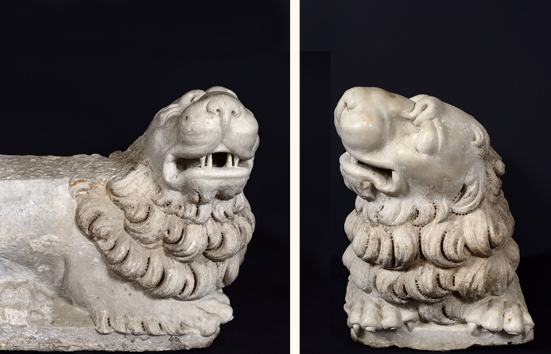
Traditionally, the lion represents royalty and, when it is placed next to the effigy of a character (for example, in funeral monuments), it can be related to his heroic qualities: strength, virtue and prudence; it is therefore a symbol of courage, but also of generosity and mercy. Moreover, as we learn from medieval bestiaries, the lion was believed to sleep with open eyes, which makes him the emblem of the most attentive guard.
This is the premise for the great tradition of the stylobate lions surveilling the entrances of medieval cathedrals, well documented, for example, in the Romanesque protiri of the Po-valley area, such as those by Benedetto Antelami (around 1150-1230) in Fidenza and Genoa, and continuing in Lombardy and Liguria during the fourteenth century.
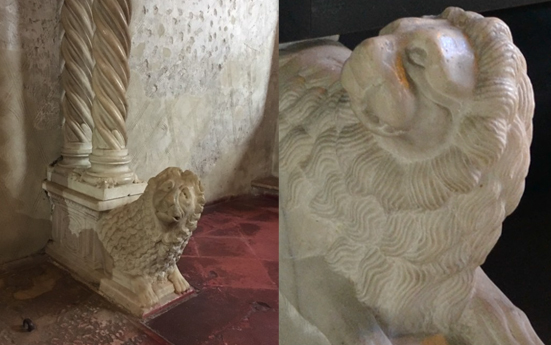
Certainly, the synthetic expressionism pushes the date of execution of the present sculpture towards the mid-sixteenth century. The intensity in the rendering of the eyebrows, the bitter fold of the lips and the intensity of the gaze are typical of various examples of lions sculpted in the sixteenth century between Liguria, Tuscany and Sicily: three regions overlooking the Tyrrhenian Sea sharing multiple artistic connections.
Particularly, our lion finds its most convincing setting in the Genoese area, one of the largest marble emporiums in the whole 16th century Europe, capable to attract several artists and workers: the Gagini or Gaggini, a family of architects and sculptors from the Alps, have been active in Genoa since the 15th century, working for the Duomo and the Doria family; at the end of the 15th century some of them moved to Sicily – to Messina and Palermo-, deeply influencing local sculpture towards the Renaissance transition. Our lion certainly inherits from this ‘Gagginesque’ culture the particular sweetness of the surfaces.
Also the Florentine Giovan Angelo Montorsoli, a pupil of Michelangelo, lived and worked in Genoa for a while, later reaching Sicily where he achieved the famous fountain of Orione (1551). It is not a coincidence that among the black stone sea monsters of that monument there is one showing a snout, very similar to our white feline (fig.).
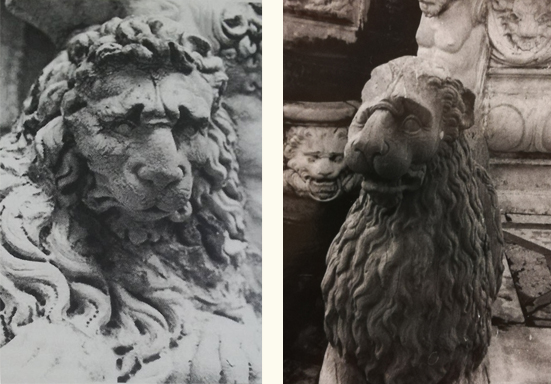
Among the many artists active in Genoa, the Lombards stand out, such as Gian Giacomo and Guglielmo della Porta who, with a third sculptor of the same origin, Niccolò di Corte, worked there both in the Cathedral – in the famous Cybo chapel and in the chapel of San Giovanni – and for some noble palaces. Their sculptures updated the taste of the Ligurian city with a language that is at the basis for example of the super-expressive lions of Palazzo Salvago, dating precisely to the mid-sixteenth century. These two felines have an abundance of sinuous skin, in the corners of their mouths and between the eyes and the forehead, that accentuates the strongly dramatic expression -the same that is found in our lion.
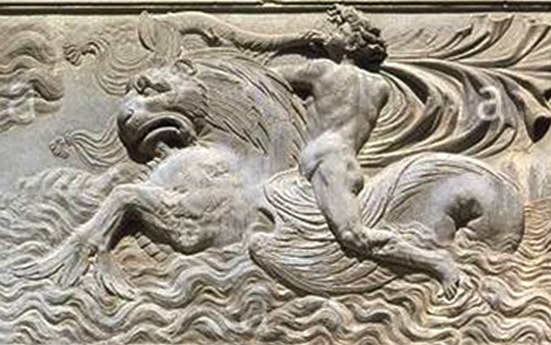
And this representation of lions with fleshy mouths and strongly corrugated supra-ciliary arches will soon reach Spain, precisely thanks to Niccolò da Corte, who will carve them in stone for the large Neptune window in the Palace of Emperor Charles the Fifth, at the Alhambra in Granada (1548).
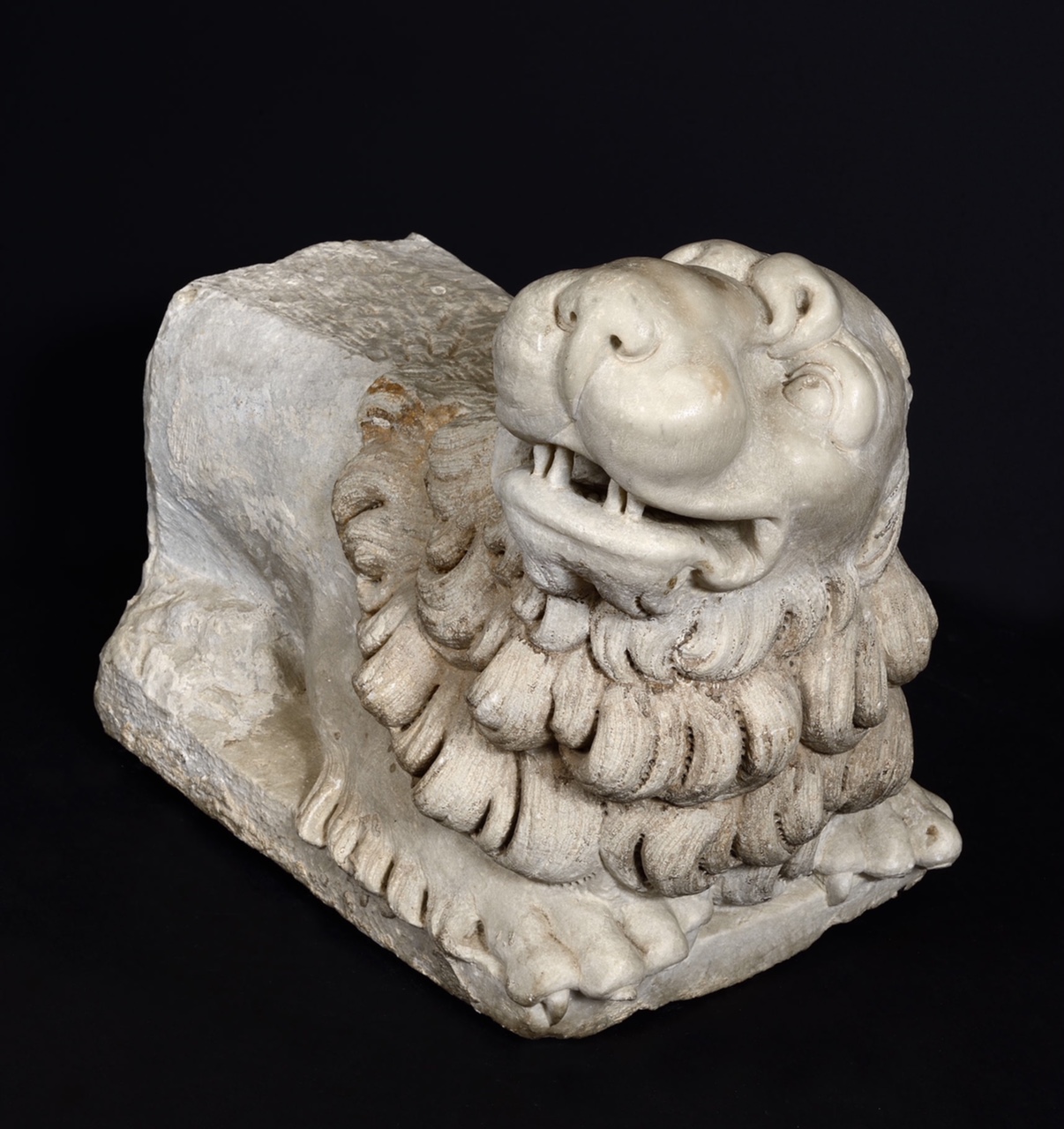
Niccolò da Corte (1500?- Granada, 1552), workshop of
LION
1540-1550
Carrara Marble
Cm 44 x 28 x 39h
References: F. Gandolfo, Il Protiro lombardo, in ‘Storia dell’Arte’ XXXIV, 1978, p. 211-220; La scultura a Genova e in Liguria, 1. Dalle origini al Cinquecento, 1987, p. 144.
© 2013 – 2024 cesatiecesati.com | Please do not reproduce without our expressed written consent
Alessandro Cesati, Via San Giovanni sul Muro, 3 – 20121 Milano – P.IVA: IT06833070151